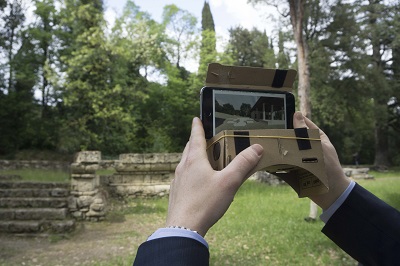Marzabotto (BO)
The City of Kainua-Marzabotto

Coordinator/ Mission Manager
Elisabetta Govi
Research Scope and Classifications
Archaeological disciplines from prehistory to the medieval period
VRA: area 10
ERC: SH5, Cultures and Cultural Production; SH 6, The study of the human past: archaeology, history, and memory
SDG: 4) Quality education; 8) Decent Work and Economic Growth; 11) Sustainable cities and communities
Prevalent type of public engagement
Organization of initiatives to promote, consult, and share research
Description
The archaeological mission of the University of Bologna at the Etruscan site of Marzabotto has been continuously active since 1988. Over the years, research activities have consistently been accompanied by outreach and public engagement to disseminate research results and, more generally, raise awareness about the site and its history with a broader audience. These efforts have involved cycles of conferences, public open days at the excavation site (often coinciding with the European Archaeology Days, which take place during the excavation period), and summer camps for children (aged 10/11) in conjunction with the actual excavation designed to introduce the profession of archaeologist and archaeology as a tool for understanding the contemporary world. Concurrently, since 1988, the Chair of Etruscology and Italic Antiquities at the University of Bologna has managed the educational services of the National Etruscan Museum P. Aria, now regulated by a new agreement with the Emilia-Romagna Regional Directorate of Museums and in collaboration with the travel agency Insolita Itinera (Dr. Silvia Romagnoli). The development of multimedia engagement channels and the university's participation in the e-Archeo project launched by the Ministry of Culture have made Marzabotto a case study and exemplary laboratory for experimenting with the most innovative approaches to the valorization of an archaeological site.
Locations and Periods
Marzabotto (BO), during the archaeological mission (June-July) and in other periods of the year as well.
Collaborations and Partners
Archaeology Section of the Department of History, Culture, and Civilization at the University of Bologna. Collaborators: Graduates, Specialists/Postgraduates, PhD holders/PhD candidates, and Research Fellows in Etruscology.
Partners:
Emilia-Romagna Regional Directorate of Museums, National Etruscan Museum P. Aria, and the archaeological area of Kainua
Golinelli Foundation
Municipality of Marzabotto
Insolita Itinera
Objectives and Engaged Audiences
The primary objective of public engagement activities is to share research methods, research results, and, more broadly, the Etruscan city of Marzabotto in all its aspects with the national and international scientific community and the general public. Special attention is given to the local community, cultural associations, schools, and audiences of children and adolescents. The guided tours and/or workshops offered also aim to raise awareness about the work of archaeologists at the site. The mission also involves local entities, not only in scientific collaboration but also in planning dissemination activities.
Impact and Evaluation Tools
Thanks to the numerous activities provided by the agreement signed in 2022, it is expected that the mission will increasingly become a center of interest for the local community, fostering proactive participation. Nationally and internationally, dissemination activities through conferences, exhibitions, and scientific papers will certainly enhance the attractiveness of the site. Quantitative impact indicators will include an increase in the number of participants in public initiatives and educational services, as well as students involved in services and internship activities, website and social media visits, and press coverage.
The audience numbers recorded in public activities and educational services are significant quantitative evaluation tools at the local level. The media coverage of public engagement initiatives is ensured through news reporting by local institutions and the quantification of access to the dedicated website. The interest in the project on the part of institutions is documented by the number of collaborations and partners, including international entities.
Keywords
Etruscans, Kainua, Appennines, Community.